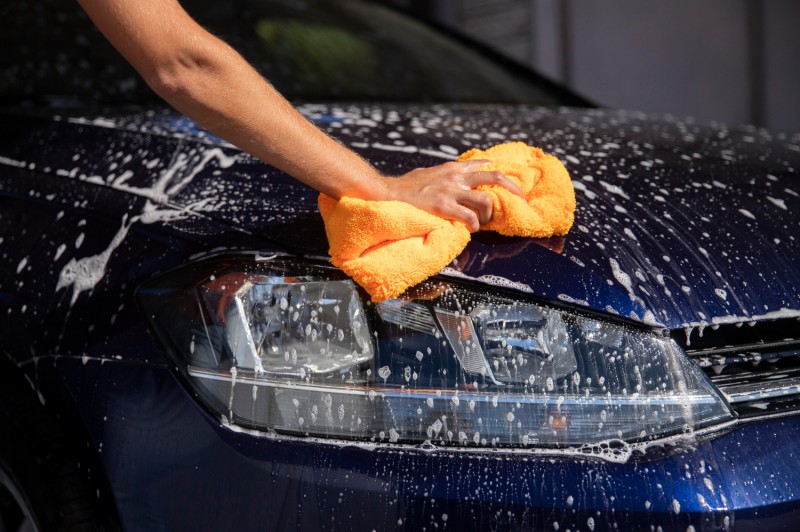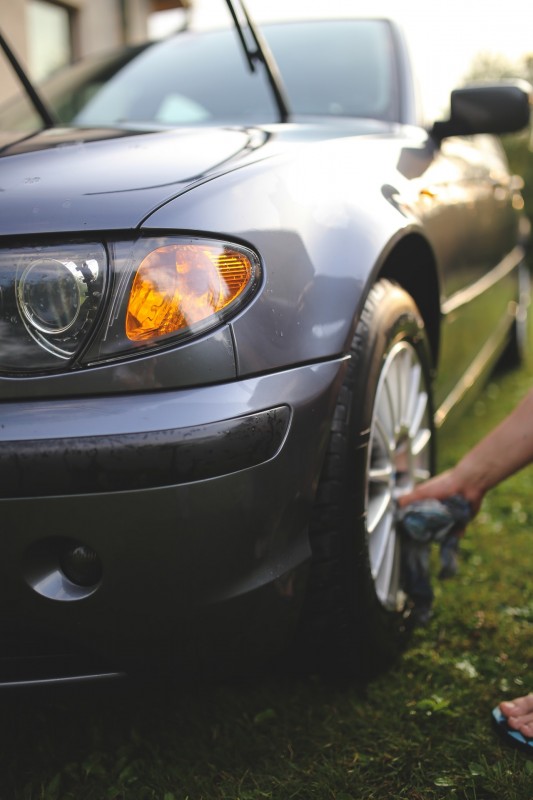Our Scrappage, Recycling and Car Blog
Car Cleaning Tips
Wednesday, 25 June 2025
You could easily get your car cleaned and valeted at a commercial car wash, but wouldn’t it be better to save some money and have the satisfaction of doing it yourself? It doesn’t have to take much more than an hour or two. This guide to car cleaning tips will help you get that showroom shine in no time.

1. Make sure you have these essential things to do the job
Here are the basic bits of kit to clean your car inside and out:
Microfibre & lint-free cloths
A sponge can easily transfer dirt and grime back onto the car - use microfibre cloths instead. Always rinse them thoroughly between washes to remove any grit they have picked up. Lint free cloths are great on glass, as they won’t build up lots of fluff and mess.
Brushes, washing mitt and car shampoo
Brushes with feathered bristles are the best, as this will help to prevent scratching the paintwork. It’s important to remember that tyres require their own special brush, with models available that have extra bristles in order to access all the dust typically found in the tyre’s sidewalls.
A vacuum cleaner
Try and use a cordless vacuum cleaner, and the smaller the better. You don’t want to be lugging a massive Dyson between the garage and your car. Make sure it has plenty of attachments for all those hard to reach corners of the interior.
A hose
Give your car a shower, not a bath. Using a garden hose to spray off the initial dirt and grime is much more effective than a sponge, which will get dirty immediately unless rinsed repeatedly in clean water, and transfer dirt back onto the car.
2. Start from the inside
Car cleaning top tip: it makes sense to clean the interior first – so you’re not wading through pools of soapy water with a vacuum cleaner or opening car doors while they are still wet.
3. Never underestimate the power of a vacuum
An effective vacuum will do as much for your car as it does for your front room. The best way to clean a car interior is to get everything out of the way before you start vacuuming – the floor mats, CDs, drinks bottles, ice scrapers and food wrappers. The barer the surface the better. Clean the detachable carpets and mats before you put them back in. Don’t forget the boot too!
4. Steam clean your upholstery
Stains in your car will happen. Fortunately, cleaning them is a fairly simple process. Car upholstery products are widely available: it’s possible to use standard ones as well. Simply spray the cleaner evenly on the material and give it a good scrub. Once you’ve got the stain out, give the area a dry with a soft cloth.
Steam cleaning can be an effective method for cleaning car upholstery, as it removes dirt without using harsh chemicals, but be cautious, as it can damage surfaces such as leather.
5. Wash from the top down
It does matter in which order you wash different parts of the car body. You don’t want the grimy soap scum running down and messing up areas you’ve just washed, so start from the roof and work down.
6. Power wash first
With your hose give the exterior of the car and the wheels a real working over, removing the dirt that might otherwise get trapped in the sponge or mitt.
7. The two bucket trick
You’ll need two buckets – one with hot water with your car shampoo mixed into it; the other cold water that you’ll use to rinse your washing mitt every few minutes. Car cleaning top tip: scrub sideways, rather than a circular motion – this will reduce any swirl marks and ensure a consistent application.
Then you’ll need another rinse with the hose, and finally drying with a chamois leather.

8. Don’t forget to clean your wheels & tyres
Clean the wheel arches and wheels one set at a time. This will prevent the cleaner from drying. You can use a specialist wheel cleaner and wheel cleaning brush if you really want a professional job. Remember to dry your wheels. A good towelling down is essential, as it helps to prevent water spots and remove any remaining brake dust. Brake dust is a real nuisance, and accumulates on your wheels when the brake pads press against the rotor.
9. Check the weather
Make sure the weather is going to be dry, but not too warm – you don’t want your car to dry too quickly while it’s being washed, and when cold water meets the hot finish of a car’s exterior, it can cause the paint to contract and crack.
10. Leave the glass till last
Having sparkly-clean wing mirrors and windows completes the look. You’ll get great results with good cleaning materials and some elbow grease.
Mirrors, windows & windscreen
Use a household glass cleaner for the mirrors and windscreen: these products will spray on and wipe off easily and they’ll give you a much better shine.
- Only use lint-free soft rags or sturdy paper towels, or you could scratch the finish.
- Car cleaning top tip: wipe one way for the inside and one way for the outside. By doing this you’ll be able to tell which side any streaks are on when you’ve finished.
- Don’t forget to clean the wiper blades themselves. If the blades remain dirty, they can scratch the glass or leave streaks on it, ruining all your hard work. Be gentle when moving the wipers, they can be deceptively easy to break.
Find your replacement car parts at ASM
We hope you’ve found our car cleaning guide useful. When you’re next washing your car, have a look for any parts that you think need replacing. ASM Auto Recycling can help with your search for replacement parts in our used car parts store. Search by car registration, make and model. We offer a 90-day parts peace of mind guarantee for fitting used replacement engines or car parts purchased from ASM.
Categories
- Car Maintenance 25
- Driving Abroad 2
- Economy 1
- Environment 3
- Insurance 2
- Light-Hearted 1
- Motoring Guides 6
- Motorways 1
- New Car Sales 1
- Safety 4
- Salvage 14
- Social & Community 5
- Used Cars 19
- Winter Driving 2
Recent posts
- Car Cleaning Tips
- The Most Stolen Cars in UK
- ABI Vehicle Salvage Code of Practice
- Car CO2 Emissions
- How To Replace A Car Air Filter
- Recycling a Car: 5 Fascinating Facts
- Clocking, Cloning, Ringing and Cut & Shut
- MOT: the complete guide
- Used Tyres Guide
- What is GAP insurance?
- Guide to finding a replacement car engine
- Does the scrap value of steel affect your car’s scrap value?
- What are the most valuable salvage car parts?
- The Ultimate Guide to Replacing Wing Mirrors
- ASM Has Procured Over 350 Jaguar and Land Rover Flood-Damaged Cars!